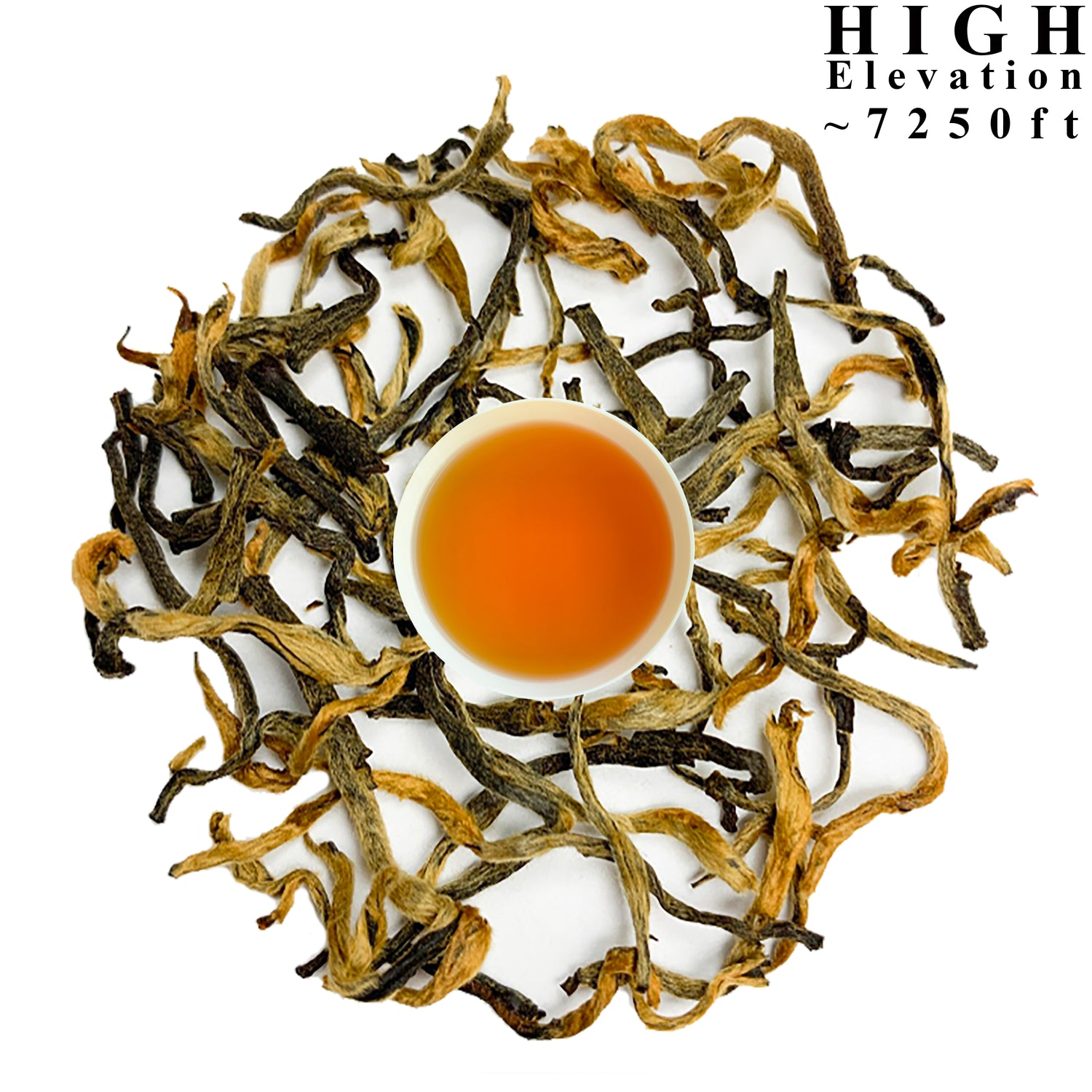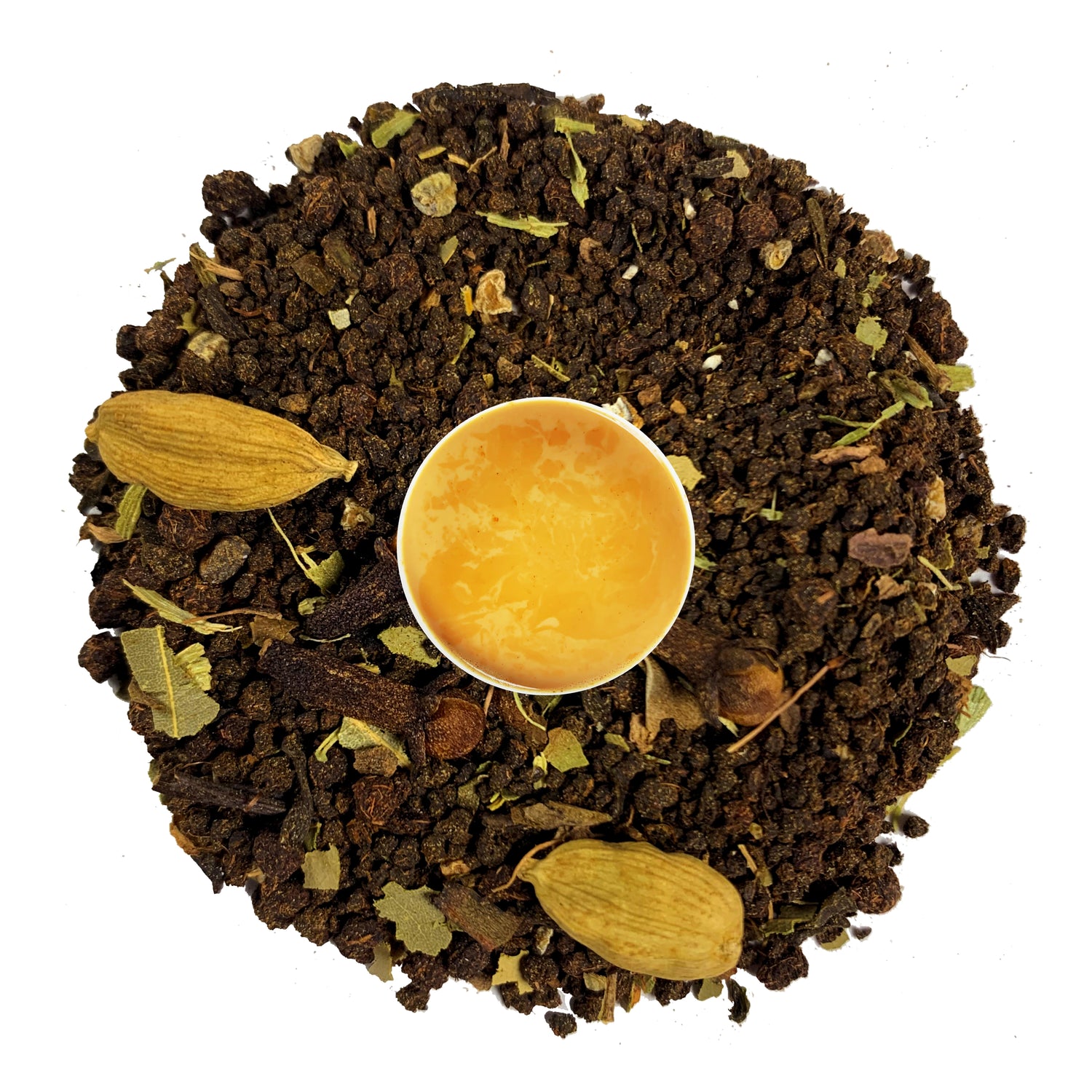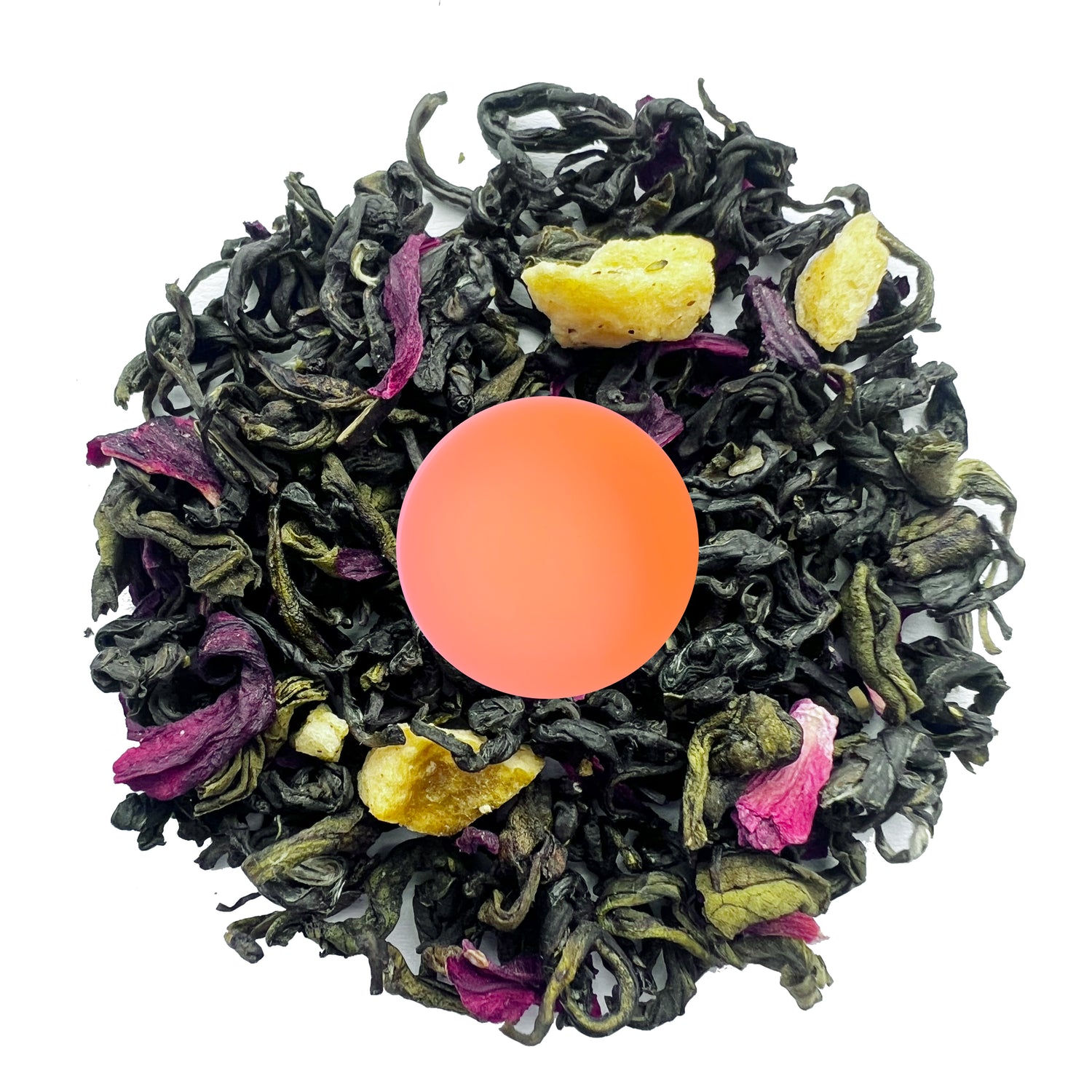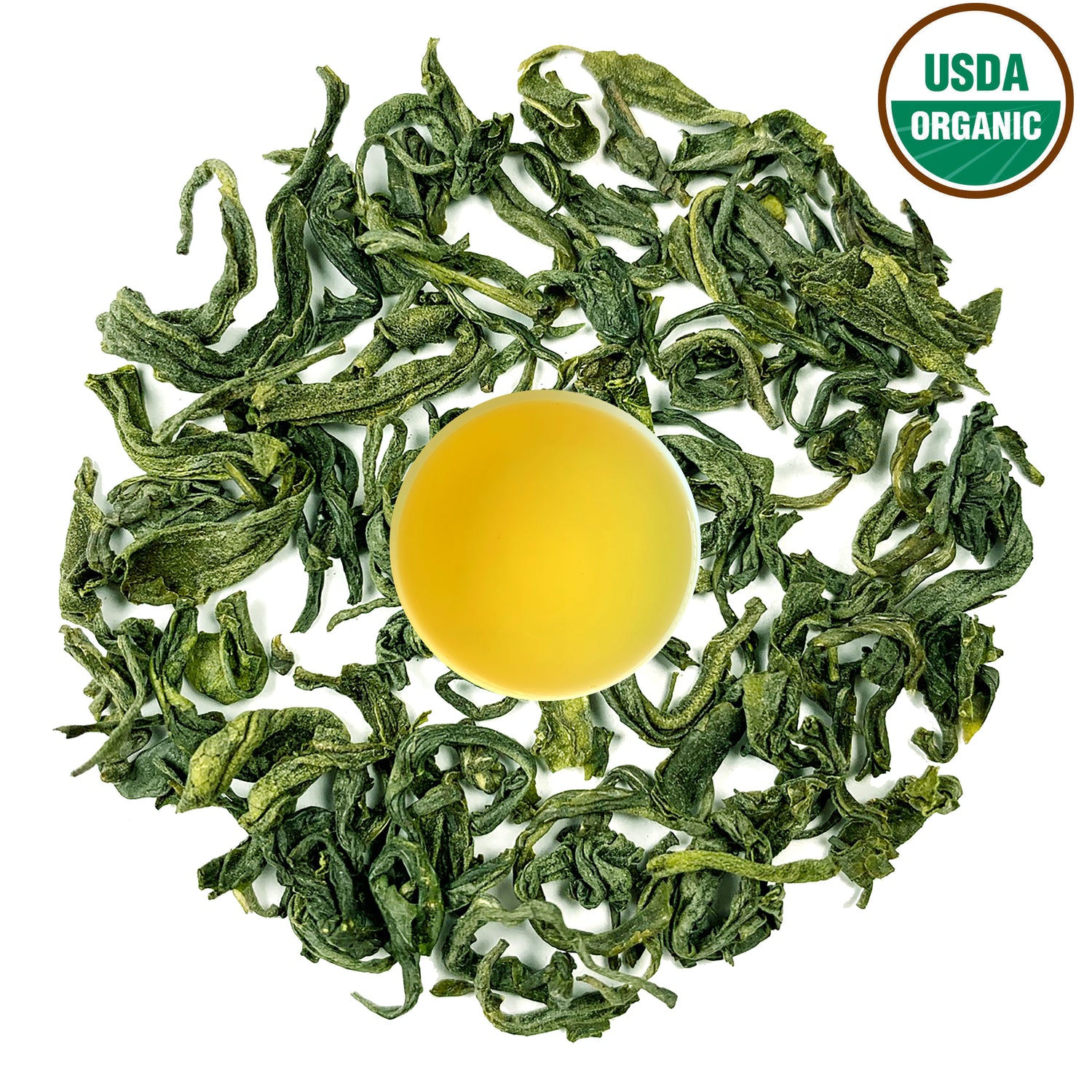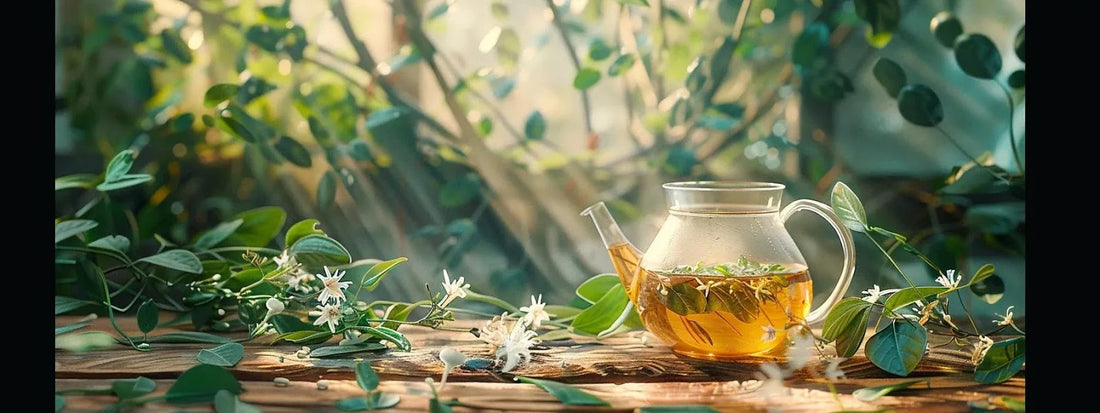
Top Choices in Teapots for Perfect Loose Leaf Brewing

Best Teapots for Optimal Loose Leaf Tea Brewing
Are you struggling to brew the perfect cup of loose leaf tea? The right teapot can make all the difference. In this guide, we'll explore the best teapots for optimal loose leaf tea brewing, including glass teapots with infusers and silicone handle tea infusers. You'll learn about top kettle types, tips for perfect brewing, and where to find the best options. Whether you're a fan of detox teas, tulsi tea, or nepal jasmine green tea, this article will help you elevate your tea experience and make the most of your favorite blends. For more insightful articles and tips on tea brewing, visit our tea blog.
Understanding the Importance of a Quality Teapot for Loose Leaf Tea
When brewing loose leaf teas like tulsi basil or lemongrass from danfetea.com, a quality kettle is essential. The right teapot enhances brewing quality through its features, material, and size. Explore how these elements affect flavor preservation and brewing capacity, ensuring you choose the perfect vessel for your tea experience.

Exploring the Features That Enhance Tea Brewing Quality
When choosing the best teapots for loose leaf tea, consider features that enhance brewing quality. Look for teapots with built-in infusers or strainers that allow leaves to expand fully, ensuring optimal flavor extraction. Glass teapots, especially those made from borosilicate glass, offer excellent heat retention and allow you to observe the tea's color as it steeps.
The spout design is crucial for a smooth, drip-free pour, while a kettle helps maintain consistent heat during brewing. Some teapots come with temperature control features, allowing you to achieve the perfect heat for different tea varieties. These elements combine to create an ideal environment for brewing your favorite loose leaf teas, resulting in a superior tea-drinking experience.
The Role of Material in Flavor Preservation
The material of your teapot plays a crucial role in preserving the delicate flavors of loose leaf teas, including herbal tea and green tea. Borosilicate glass and ceramic teapots are excellent choices for maintaining the authentic taste of your brew, as they don't impart any additional flavors to the water. These materials also retain heat well, ensuring a consistent temperature throughout the steeping process, which is essential for detoxification benefits and optimal flavor extraction.
Glass teapots offer a unique advantage, allowing you to visually monitor the brewing process of your loose leaf or tea bag infusions. This visual element can help you achieve the perfect steep time for your green tea or herbal blends. Stainless steel teapots are durable and maintain temperature effectively, but may slightly alter the taste of more delicate teas. Consider your preferred tea types when selecting a teapot material to ensure the best flavor preservation: borosilicate glass
- Porcelain/ceramic: Ideal for preserving authentic tea flavors
- Glass: Perfect for visual brewing and delicate teas
- Stainless steel: Durable and great for stronger teas
- Cast iron: Excellent heat retention, suitable for robust teas
How Size and Capacity Affect Brewing
The size and capacity of your teapot directly impact your brewing experience. A larger teapot, such as a 32-ounce porcelain model, allows you to brew multiple cups at once, ideal for sharing or enjoying a longer tea session with herbs like ginger and lemon. Conversely, a smaller 12-ounce stainless steel teapot is perfect for individual servings, ensuring each cup is fresh and maintaining optimal temperature for delicate teas.
Your kettle's capacity also affects the leaf-to-water ratio, crucial for achieving the desired strength and flavor profile. A properly sized teapot ensures you can use the correct amount of loose leaf tea, whether you're brewing a caffeine-rich black tea or a soothing herbal blend. By matching your teapot size to your brewing needs, you'll consistently produce well-balanced, flavorful cups of tea.
The right teapot can transform your tea experience. Now, let's explore the best types for brewing loose leaf tea.
Top Teapot Types for Loose Leaf Tea Brewing
Explore the top teapot types for brewing loose leaf tea, including glass, porcelain, and borosilicate glass options. Learn about the aesthetic appeal of glass teapots, flavor benefits of porcelain, and durability of stainless steel. Compare infuser teapots with traditional styles, and discover how ceramic, cast iron, and pottery teapots can enhance your tea experience. Find the perfect teapot for your weight loss journey or daily mug of tea.
Glass Teapots and Their Aesthetic Appeal
Glass teapots made from borosilicate glass offer a unique visual experience, allowing you to watch your loose leaf tea unfurl and infuse. The transparent design lets you monitor the strength of your brew, whether you're steeping a spicy blend or a delicate green leaf tea. Many glass teapots come with a stainless steel infuser, combining functionality with aesthetics.
Beyond their practical benefits, glass teapots bring an element of elegance to your tea ritual. Their clarity showcases the vibrant colors of different tea varieties, enhancing your sensory experience. This visual appeal can contribute to a more mindful tea-drinking practice, potentially supporting your overall health and wellness goals with herbal tea.
Benefits of Porcelain Teapots for Flavor
Porcelain teapots offer unparalleled benefits for preserving and enhancing the flavor of your loose leaf tea. Unlike clay or iron teapots, porcelain doesn't absorb or impart flavors, ensuring that each brew tastes exactly as intended. This makes porcelain an excellent choice for a versatile tea set that can handle a variety of tea types like green tea without affecting their distinct tastes.
The smooth, non-porous surface of porcelain teapots also prevents the buildup of tannins, which can alter the taste of your tea over time. Additionally, porcelain's heat retention properties help maintain a consistent brewing temperature, crucial for extracting the optimal flavor from your loose leaf teas. When selecting a porcelain kettle, consider the following factors:
- Glaze quality: Opt for a high-quality glaze to ensure longevity and flavor purity
- Size: Choose a size that suits your typical brewing needs
- Design: Look for features like a built-in strainer or a wide opening for easy cleaning
- Brand reputation: Select teapots from reputable manufacturers known for quality stoneware
The Durability of Stainless Steel Teapots
Stainless steel teapots offer unparalleled durability for brewing your favorite loose leaf teas, from oolong to rooibos. Their robust construction resists dents, scratches, and corrosion, ensuring your teapot maintains its functionality and appearance over time. This durability makes stainless steel teapots an excellent choice for daily use, allowing you to enjoy your lemon-infused or matcha teas without worry.
Beyond their strength, stainless steel kettle s provide excellent heat retention, keeping your tea at the optimal temperature for longer. This feature is particularly beneficial when brewing teas like oolong, which may require multiple infusions. Stainless steel is also non-reactive, preserving the authentic flavors of your tea without imparting any metallic taste. You can trust that your brews meet Food and Drug Administration standards for food-safe materials, giving you peace of mind with every sip.
Comparing Infuser Teapots and Traditional Styles
Infuser teapots offer convenience for brewing loose leaf teas like herbal tea, with built-in strainers that simplify the process. These teapots allow you to control steeping time and leaf expansion, potentially enhancing digestion benefits. When comparing unit prices, infuser teapots often provide better value, as they eliminate the need for separate strainers or filters. For more insights on brewing techniques, check out how to brew loose leaf tea without an infuser.
Traditional teapots, while lacking built-in infusers, offer versatility and a classic aesthetic. You can use them with various brewing methods, including tea bags or kettle strainers. This flexibility can be beneficial if you're incorporating tea into your medication routine or managing a diverse tea cart. Consider your brewing preferences and tea types when choosing between infuser and traditional styles: how to brew loose leaf tea without an infuser
- Infuser teapots: Convenient for loose leaf teas, easy cleanup
- Traditional teapots: Versatile, suitable for multiple brewing methods
- Hybrid options: Removable infusers for the best of both worlds
- Material considerations: Glass, ceramic, or stainless steel affect heat retention and flavor
You've learned about teapot types. Now let's explore the best ones for 2025. These top picks will elevate your tea brewing experience. For more insightful details on tea varieties and their preparatory methods, you might find our tea blog enriching and helpful.
Best Teapots for Loose Leaf Brewing in 2025
Discover the best teapots for loose leaf brewing in 2025, from glass and porcelain to stainless steel and infuser designs. We'll review top glass options, recommend porcelain selections, highlight quality stainless steel teapots, and explore unique infuser models for convenient steeping. Whether you prefer gaiwan-style brewing or need dishwasher-safe options for turmeric borosilicate glass or mate teas, you'll find the perfect teapot for your needs.

Review of Top Glass Teapots for Brewing
When selecting glass teapots for brewing loose leaf teas, consider the teaware's quality and functionality. The best glass teapots offer excellent visibility, allowing you to watch your yerba mate or masala chai steep to perfection. Look for models with a sturdy construction and heat-resistant borosilicate glass to ensure durability and safety during use. Consider choosing a kettle with a sturdy construction for brewing the perfect cup.
Choose a glass teapot that complements your brewing style and tea preferences. Some top options feature removable infusers for easy cleaning, while others incorporate a borosilicate glass spout for precise pouring. Consider the teapot's weight and capacity to ensure it meets your needs, whether you're brewing for one or hosting a tea tasting. Here are key features to look for in glass teapots:
- Borosilicate glass construction for heat resistance
- Removable stainless steel infuser
- Ergonomic handle for comfortable pouring
- Wide opening for easy cleaning
- Stovetop-safe design for direct heating

Recommended Porcelain Selections for Loose Leaf
When selecting porcelain teapots for loose leaf tea, prioritize designs that complement your brewing habits. Look for teapots with a wide opening to accommodate various loose leaf varieties, from peppermint to root teas. Opt for models with a built-in strainer or removable infuser to simplify your brewing process and enhance your health-friendly tea routines by infusing lemon. How to brew loose leaf tea without an infuser
Consider the capacity of your porcelain teapot to ensure it meets your needs, whether you're brewing for personal use or serving guests. Choose teapots with excellent heat retention properties to maintain optimal brewing temperatures for your loose leaf teas. When selecting your porcelain teapot, keep these factors in mind: kettle
- Heat retention capabilities
- Presence of a built-in or removable infuser
- Capacity suitable for your brewing needs
- Ease of cleaning and maintenance
- Compatibility with your preferred teacup style
High-Quality Stainless Steel Teapots to Consider
When selecting a high-quality stainless steel teapot for your loose leaf brews, consider models with a fine-mesh sieve integrated into the spout. This feature ensures a smooth pour while effectively straining leaves, particularly beneficial for delicate teas like sencha. Look for teapots with a wide base that can be placed directly on your stove, allowing you to boil water and steep tea in one vessel.
The durability of stainless steel makes these teapots ideal for daily use, resisting scratches and maintaining their polished appearance over time. Choose a kettle with a double-wall construction to provide superior heat retention, keeping your tea at the optimal temperature throughout your brewing session. The metal's non-reactive properties preserve the authentic flavors of your loose leaf teas, ensuring a consistently enjoyable experience with each brew.
Unique Infuser Teapots for Convenience
Unique infuser teapots offer convenient solutions for brewing loose leaf teas, including white tea and various blends. These innovative designs feature integrated strainers or removable infusers, allowing you to steep your favorite teas without the need for additional equipment. Some models even cater to iced tea enthusiasts, with specialized chambers for cooling brewed tea quickly. Herb teas are often chosen for their detoxification properties.
When selecting an infuser teapot, consider options that allow for easy cleaning and maintenance, as this can impact the longevity of your teaware and the quality of your brews. Look for teapots with wide openings and dishwasher-safe components to simplify your tea preparation routine. Many modern infuser teapots also come with temperature recommendations, serving as a helpful reference for brewing different herbal tea varieties:
- Green and white teas: 160-180°F (71-82°C)
- Oolong teas: 180-190°F (82-88°C)
- Black and herbal teas: 200-212°F (93-100°C)
- Iced tea blends: Brew hot, then cool rapidly
Choosing the perfect teapot is just the start. Now, let's dive into the art of brewing that will make your tea sing.
Tips for Brewing the Perfect Loose Leaf Tea
Learn essential tips for brewing perfect loose leaf tea, from water temperature guidelines to using fresh ingredients. Discover how to clean your kettle, whether it's a tetsubin or bone china, for optimal taste. These techniques will help you enjoy the full benefits of your detox teas and maximize the value of your purchase, regardless of the sale price.
Water Temperature and Time Guidelines
To brew the perfect loose leaf tea, you must consider water temperature and steeping time. For delicate teas like hibiscus or citrus blends, use borosilicate glass between 160-180°F and steep for 1-3 minutes. Robust teas, such as those used in fat-burning exercise regimens, require hotter water around 200-212°F and longer steeping times of 3-5 minutes. For a detailed guide on these processes, consider our how to brew loose leaf tea.
Your teapot's material affects heat retention, influencing steeping time. Borosilicate glass or ceramic teapots with wide baskets allow leaves to expand fully, enhancing flavor extraction. Remember to adjust steeping times based on your personal taste preferences and the specific tea variety you're brewing. For more tips on enhancing your tea experience, check out how to brew loose leaf tea without an infuser.
The Importance of Using Fresh Ingredients
Using fresh ingredients is crucial for brewing the perfect loose leaf tea, whether you're using a french press or a traditional kettle. Fresh tea leaves contain higher levels of antioxidants and flavor compounds, which can support liver function and promote better sleep. By choosing high-quality, recently harvested tea leaves, you ensure that your brew retains its full potential for both taste and health benefits.
When selecting loose leaf teas, pay attention to packaging dates and storage conditions to maintain freshness. Proper storage helps preserve the tea's natural compounds, including those found in senna and other detoxifying herbs, which can aid in detoxification by eliminating toxins from your body. Remember that even the best teapot can't compensate for stale ingredients, so prioritize freshness to maximize the enjoyment and effectiveness of your tea-drinking experience.
How to Clean Your Teapot for Optimal Taste
Proper cleaning of your teapot is essential for maintaining optimal taste in your loose-leaf tea, whether you're brewing clover or Japanese varieties. Start by rinsing your teapot with hot water after each use to remove any residual tea leaves or oils. For a deeper clean, use a soft brush and mild, unscented dish soap to gently scrub the interior, paying special attention to the spout and lid. Add a small amount of lemon juice for its detoxification properties.
For stubborn stains or buildup, create a paste using baking soda and water, applying it to affected areas before rinsing thoroughly. If you're using your kettle for laxative teas or strong flavors like those from the United Kingdom, consider dedicating specific teapots to these brews to prevent flavor contamination. Remember to use only a teaspoon of cleaning solution when necessary, as excessive use can affect future brews:
|
Cleaning Method |
Frequency |
Notes |
|
Hot water rinse |
After each use |
Removes residual leaves and oils |
|
Soap and brush |
Weekly |
Deep clean for regular maintenance |
|
Baking soda paste |
As needed |
For stubborn stains or buildup |
You've mastered the art of brewing. Now let's tackle the questions that often arise. These answers will deepen your knowledge and enhance your tea experience.
Frequently Asked Questions About Loose Leaf Tea and Teapots
Explore essential questions about loose leaf tea and teapots, including heat retention, infuser functionality, and borosilicate glass teapot care. Learn how to choose the best teapot for your favorite brews, from chamomile to kyūsu-style green teas. Discover tips for maintaining your teaware, whether you're brewing in Canada or stocking up on specialty teas. For more insights into the world of tea, including the differences between green tea and herbal tea, check out green tea vs herbal tea.
What Is the Best Teapot for Retaining Heat?
When choosing a teapot for optimal heat retention, consider cast iron or ceramic options. These materials excel at maintaining temperature, ensuring your chinese tea or berry-infused brews stay hot throughout your tasting menu. Cast iron teapots, like those used in traditional Chinese tea ceremonies, offer exceptional heat retention and can keep your tea warm for extended periods. Cast iron teapots are perfect for herbal tea lovers.
Alternatively, high-quality ceramic teapots, such as those from Wedgwood, provide excellent insulation for your loose leaf teas. Whether you're brewing a robust fennel blend or a delicate green tea, these teapots help maintain the ideal temperature, allowing you to fully appreciate the nuanced flavors of your chosen brew. Remember to preheat your teapot with hot water before adding your tea leaves to maximize heat retention.
How Do Infuser Teapots Work?
Infuser teapots simplify your loose leaf tea brewing process, supporting a healthy diet while enhancing your tea experience. These teapots feature a built-in strainer or basket that holds your loose tea leaves, allowing hot water to circulate freely around them for optimal flavor extraction. As you steep your herbal tea, whether it's a cinnamon-infused blend for energy or a soothing herbal mix to combat bloating, the infuser keeps the leaves contained while allowing the water to absorb their flavors and beneficial compounds.
You can easily remove the infuser when your tea reaches the desired strength, preventing over-steeping and bitter flavors. This design is particularly useful when brewing teas that require precise steeping times or when you want to reuse the leaves for multiple infusions. After brewing, you can lift out the infuser and empty the used leaves into a compost bowl, making cleanup quick and hassle-free. This convenient system allows you to enjoy the full benefits of herbal tea without the mess, supporting your wellness routine with each cup.
Are There Special Care Instructions for Glass Teapots?
Borosilicate glass teapots require special care to maintain their clarity and functionality. After brewing your spearmint or gongfu tea, rinse your glass teapot with warm water to remove any residue. Avoid using abrasive cleaning tools or harsh detergents, as these can scratch or cloud the glass surface. For more insights on how to enjoy your tea, you might find everything about spearmint teas quite enlightening.
To prevent thermal shock, avoid exposing your borosilicate glass teapot to extreme temperature changes. When adding hot water to brew your milk tea or preparing a bag of loose leaf, ensure the teapot is at room temperature. For thorough cleaning, use a mixture of baking soda and water, gently scrubbing the interior before rinsing thoroughly. Store your glass teapot in a safe place, away from other kitchen items to prevent accidental damage, and consider including your zip code when registering for warranty protection.
Now you know the basics. Let's find your perfect teapot. Here's where to get the best ones for loose leaf tea.
Where to Purchase the Best Teapots for Loose Leaf Tea
Discover where to find the best teapots for your loose leaf tea brewing needs. Explore online marketplaces offering quality options, from Japanese tea ceremony sets to plastic infusers. Learn about specialty stores with diverse selections, including teapots for Assam teas. Consider the pros and cons of buying second-hand teapots, ensuring they're free from soap residue and suitable for borosilicate glass fruit infusions.
Online Marketplaces for Quality Teapots
When searching for quality teapots online, you'll find numerous marketplaces offering a wide selection to suit your brewing needs. These platforms allow you to compare features, prices, and customer reviews, helping you choose the perfect teapot for your favorite herbal tea loose leaf teas. Whether you're looking for a teapot to brew stress-relieving herbal blends or a vessel for your honey-infused drinks, online marketplaces provide convenient access to diverse options.
Many online retailers offer teapots made from various materials, including borosilicate glass-accented designs that add a natural touch to your tea ritual. You can easily find teapots specifically designed for brewing diuretic teas or those with built-in infusers for loose leaf varieties. By exploring these online marketplaces, you'll discover teapots that not only meet your functional needs but also complement your personal style and enhance your overall tea-drinking experience.
Specialty Stores for Teapot Selections
Specialty stores offer a curated selection of teapots tailored for brewing various loose leaf teas, including Assam and Earl Grey varieties. These shops often provide expert guidance on choosing the right teapot for your preferred tea, considering factors like material, size, and brewing method. You'll find teapots designed to enhance the flavor profile of specific teas, helping you avoid potential dehydration and maximize the benefits of your chosen herbal tea ingredients.
Many specialty stores showcase teapots that complement different lifestyles, from traditional ceramic pieces to modern, travel-friendly options. These retailers often stock teapots with features like borosilicate glass built-in infusers or temperature control, catering to tea enthusiasts who prioritize convenience and precision in their brewing process. By visiting these stores, you can explore a range of teapots that not only brew delicious tea but also enhance your overall tea-drinking experience.
Considerations for Buying Second-Hand Teapots
When considering second-hand teapots for your loose leaf brews, examine them carefully for signs of wear or kettle. Look for teapots with minimal discoloration, especially if you plan to brew light-colored teas like vanilla or yellow varieties. Check the price against new models to ensure you're getting a good value, factoring in any potential restoration costs.
Inspect the teapot's capacity, ensuring it meets your brewing needs. A standard 32-ounce teapot is versatile for most tea sessions. Before purchasing, ask about the teapot's history and previous use to avoid any lingering flavors or odors that might affect your tea. Consider these factors when evaluating second-hand pottery teapots:
|
Factor |
Consideration |
|
Material integrity |
Check for cracks or chips |
|
Stain level |
Assess impact on tea flavor |
|
Price comparison |
Compare to new models |
|
Capacity |
Ensure it meets your needs |
|
Previous use |
Inquire about brewing history |
Frequently Asked Questions
What features should I look for in a teapot for loose leaf tea?
When choosing a kettle for loose leaf tea, look for one with a wide infuser basket to allow leaves to fully expand. Opt for a heat-retaining material like ceramic or cast iron, and ensure a tight-fitting lid. Consider size, spout design, and ease of cleaning for the best brewing experience. Discover more insights on a beginner's guide to white tea.
How do different teapot materials affect the flavor of loose leaf tea?
Different teapot materials can significantly influence tea flavor. Ceramic retains heat well, enhancing overall taste. Glass allows visual appreciation but cools quickly. Yixing clay absorbs flavors over time, enriching future brews. Metal can impart a slight metallic taste, while cast iron provides excellent heat retention for fuller-bodied teas. Borosilicate glass allows visual appreciation but cools quickly.
Can you recommend some top-rated teapots for brewing loose leaf tea?
For brewing loose leaf tea, consider the Hario Chacha Kyusu Maru Tea Pot, or 25 oz Glass Teapot with Stainless Steel Infuser. These top-rated options offer excellent infusion, easy cleaning, and durable borosilicate glass construction, enhancing your tea experience with their thoughtful designs and quality materials.
What's the ideal water temperature for brewing different types of loose leaf tea?
For optimal flavor, brew green and white teas at 160-175°F, oolong at 180-190°F, and black teas at 200-212°F. Herbal teas generally steep best at boiling point (212°F). Adjust temperatures slightly based on personal preference and specific tea varieties. For more tips on perfecting your brewing process, check out our guide on how to brew loose leaf tea without an infuser.
Where can I find high-quality teapots specifically designed for loose leaf tea?
Discover premium teapots designed for loose leaf tea at specialty tea shops, kitchenware stores, and reputable online retailers. Look for teapots with built-in infusers, fine mesh strainers, or dedicated brewing baskets to enhance your tea experience. Danfe Tea offers a selection of high-quality teapots suited for Himalayan loose leaf teas.

